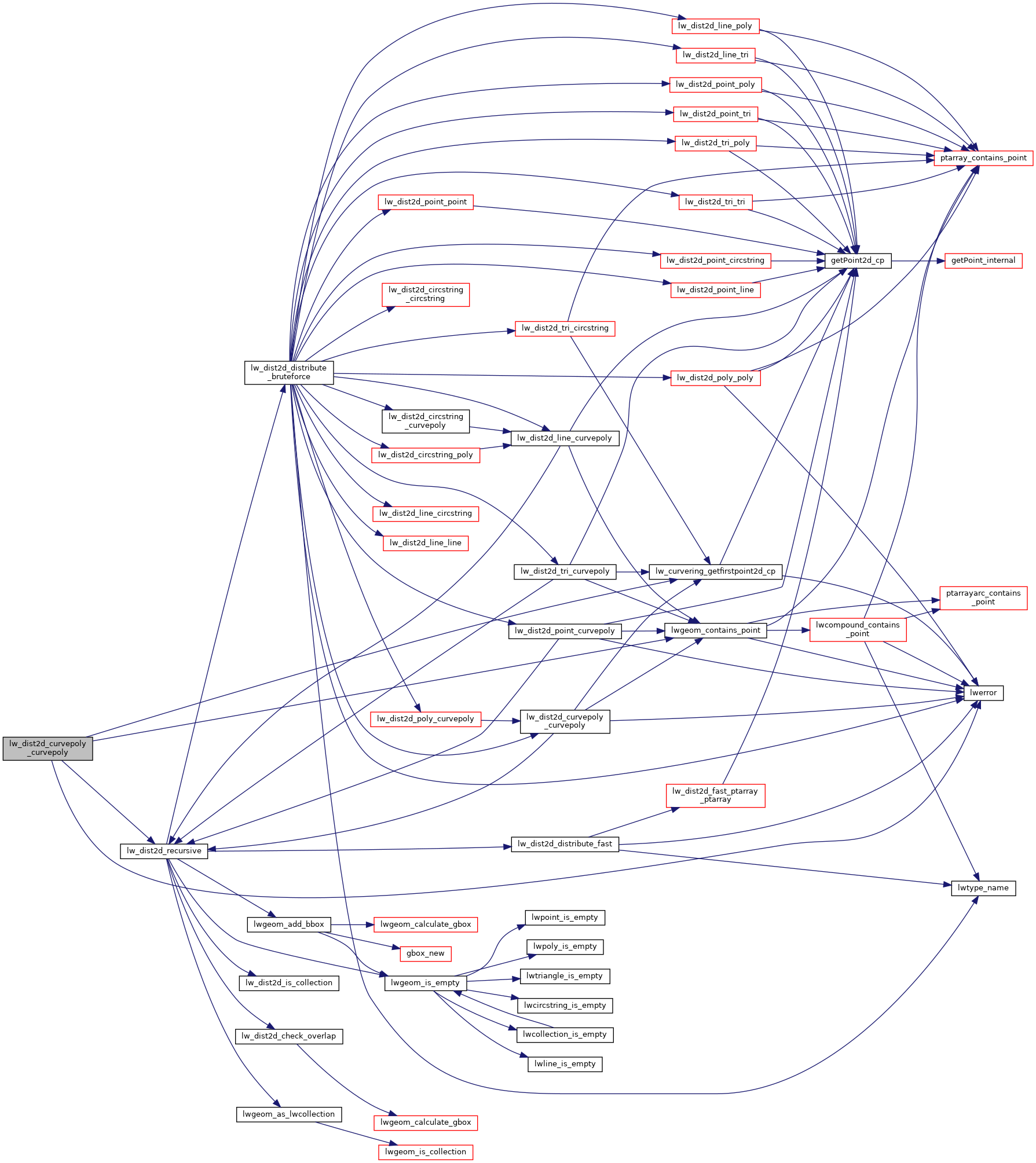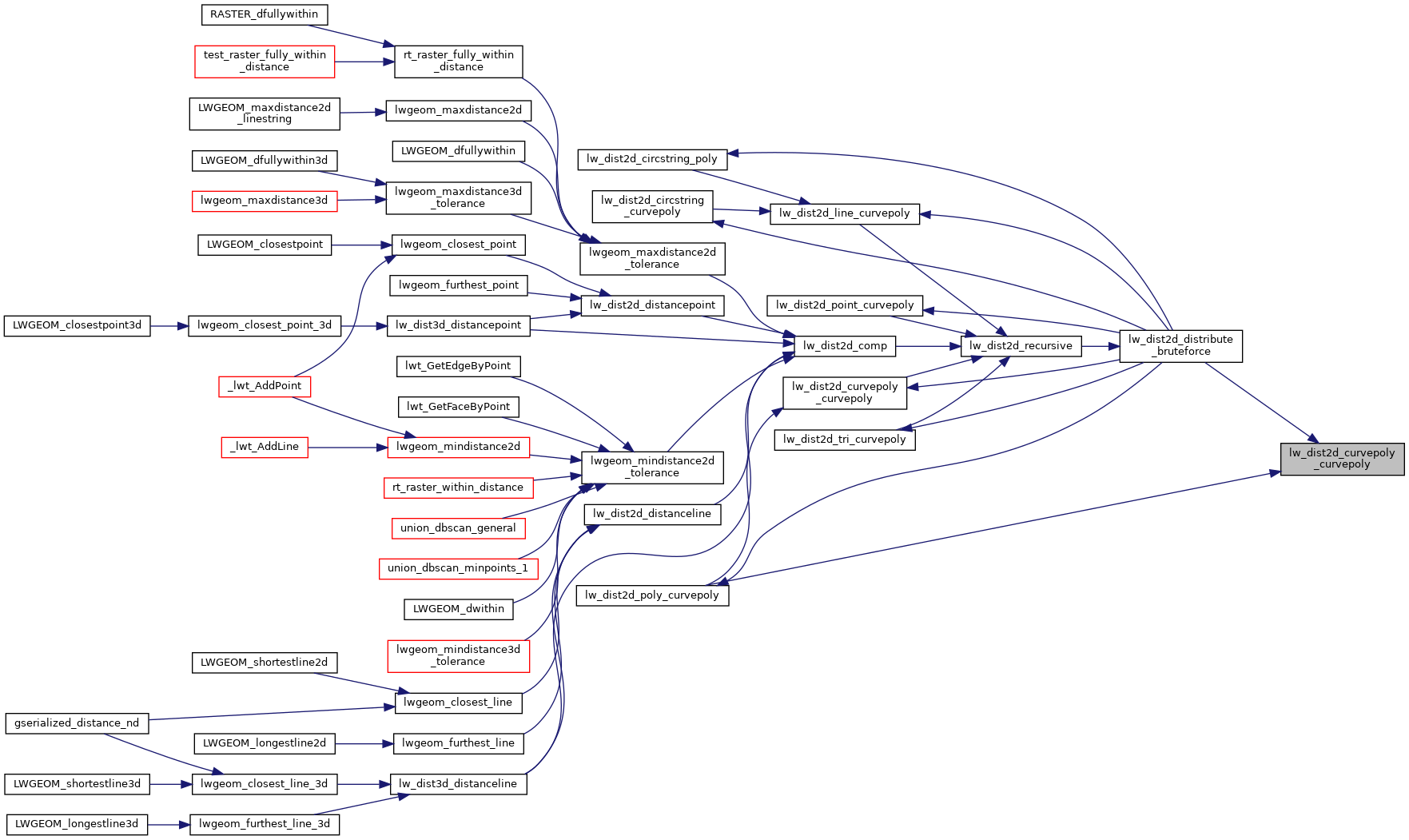◆ lw_dist2d_curvepoly_curvepoly()
| int lw_dist2d_curvepoly_curvepoly | ( | LWCURVEPOLY * | poly1, |
| LWCURVEPOLY * | poly2, | ||
| DISTPTS * | dl | ||
| ) |
Definition at line 1054 of file measures.c.
1062 /* 2 check if poly1 has first point outside poly2 and vice versa, if so, just check outer rings
1063 here it would be possible to handle the information about which one is inside which one and only search for the
1073 /*3 check if first point of poly2 is in a hole of poly1. If so check outer ring of poly2 against that hole
1080 /*4 check if first point of poly1 is in a hole of poly2. If so check outer ring of poly1 against that hole
1087 /*5 If we have come all the way here we know that the first point of one of them is inside the other ones
int lwgeom_contains_point(const LWGEOM *geom, const POINT2D *pt)
Definition: lwcompound.c:129
static void lw_dist2d_distpts_set(DISTPTS *dl, double distance, const POINT2D *p1, const POINT2D *p2)
Definition: measures.c:81
int lw_dist2d_recursive(const LWGEOM *lwg1, const LWGEOM *lwg2, DISTPTS *dl)
This is a recursive function delivering every possible combination of subgeometries.
Definition: measures.c:299
static const POINT2D * lw_curvering_getfirstpoint2d_cp(LWGEOM *geom)
Definition: measures.c:883
Definition: liblwgeom.h:404
References DIST_MAX, lw_curvering_getfirstpoint2d_cp(), lw_dist2d_distpts_set(), lw_dist2d_recursive(), LW_FALSE, LW_OUTSIDE, LW_TRUE, lwerror(), lwgeom_contains_point(), DISTPTS::mode, LWCURVEPOLY::nrings, and LWCURVEPOLY::rings.
Referenced by lw_dist2d_distribute_bruteforce(), and lw_dist2d_poly_curvepoly().
Here is the call graph for this function:

Here is the caller graph for this function:
